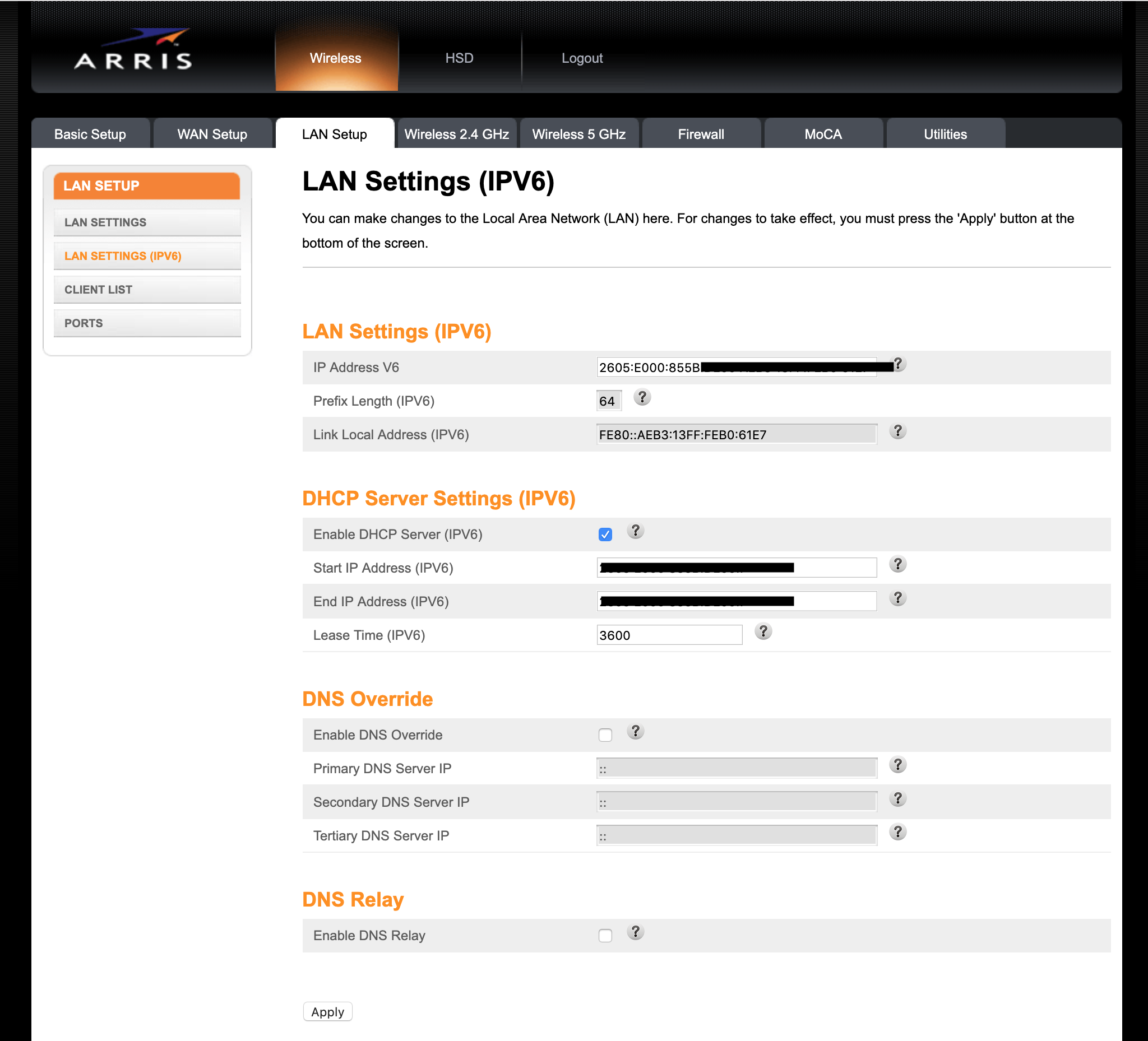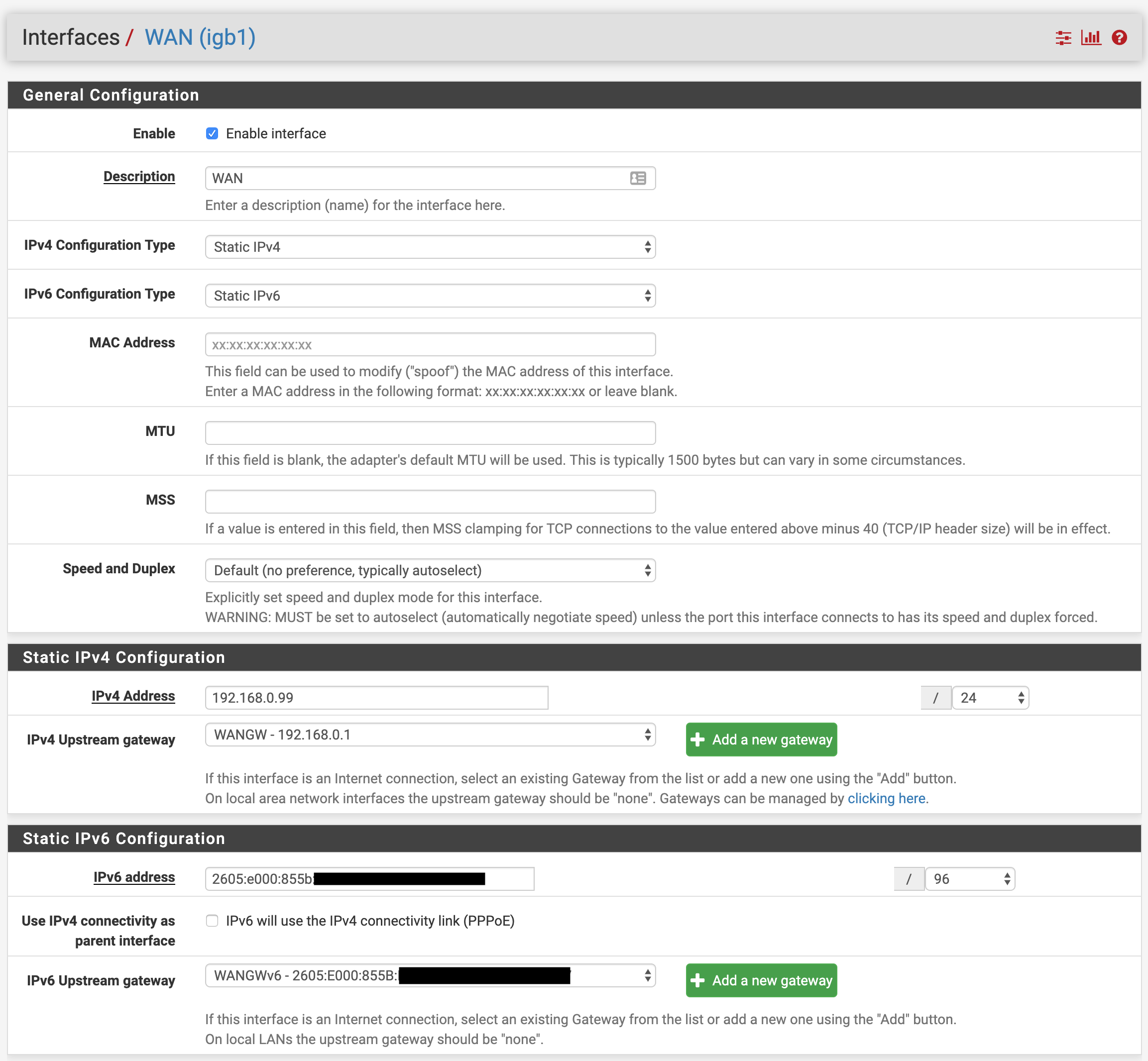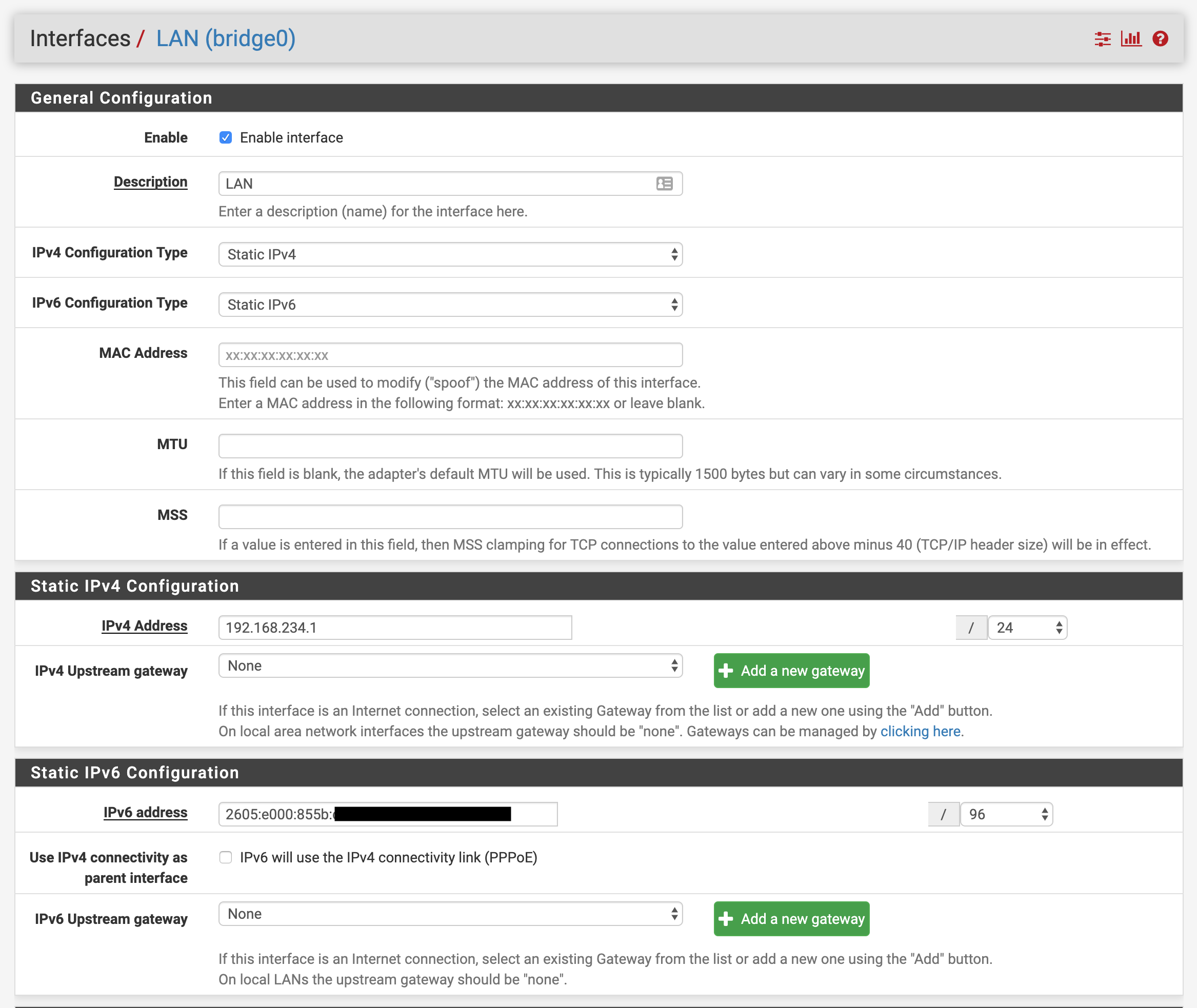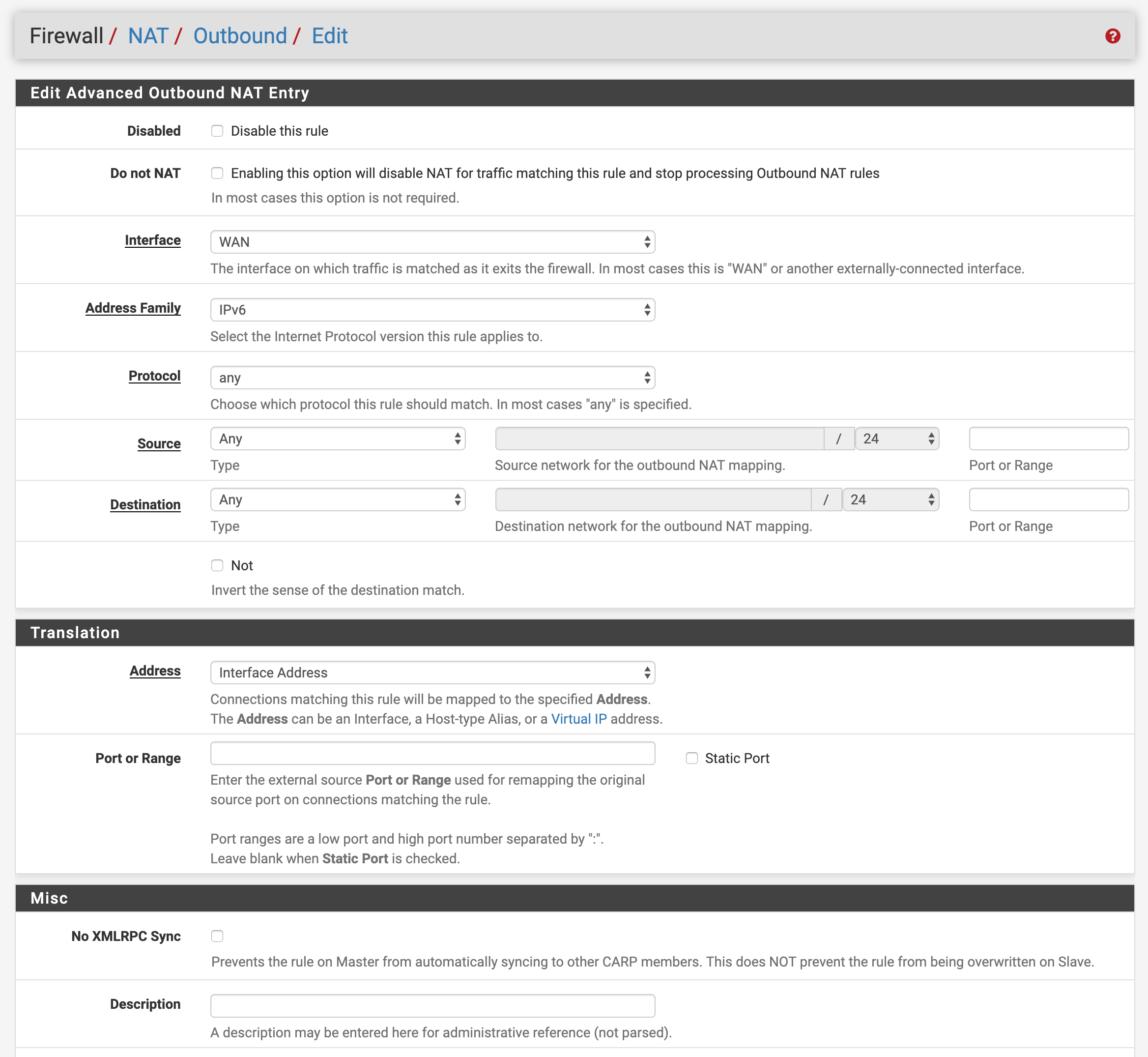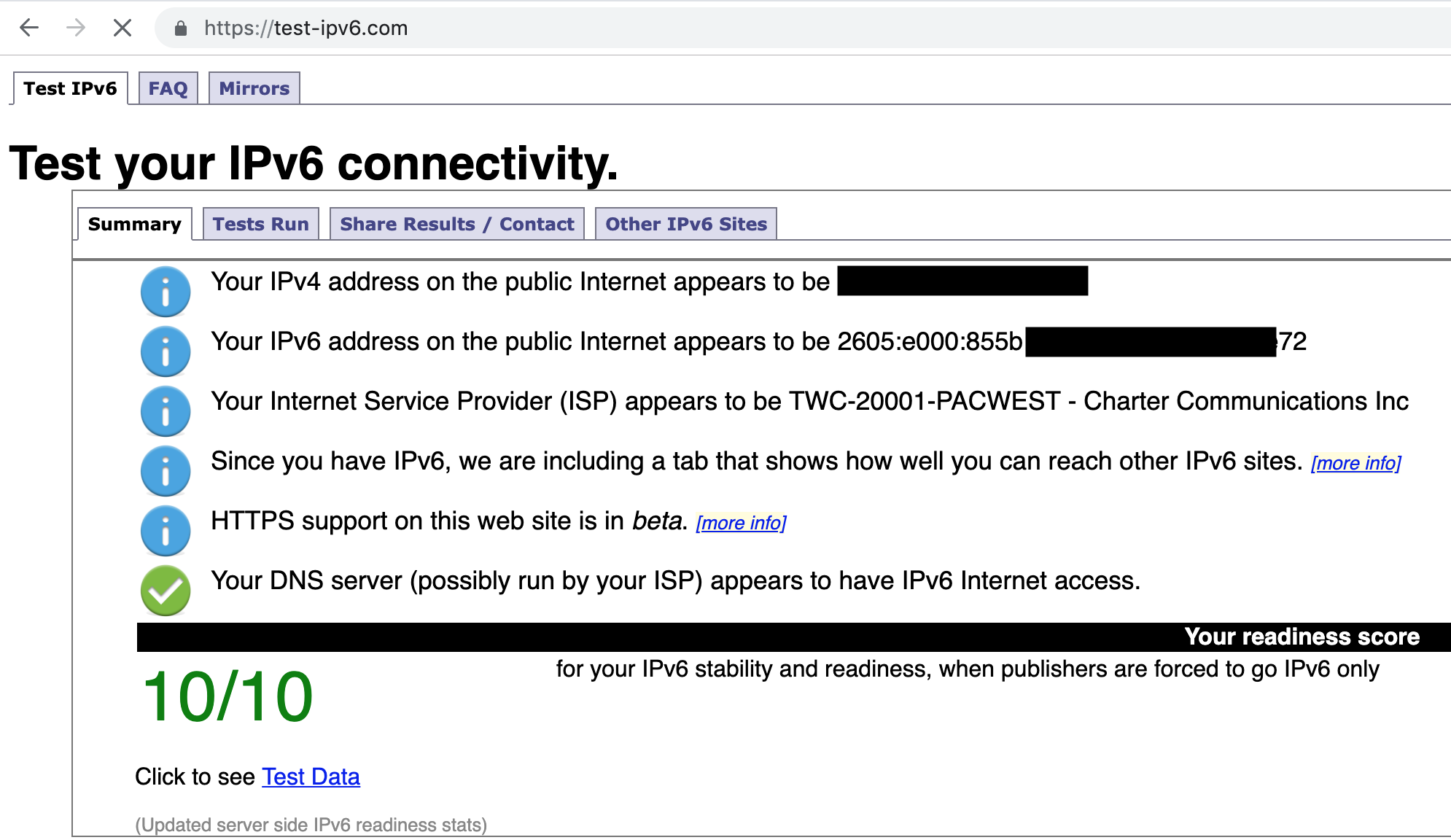I’ve had cable Internet from Spectrum for about 3 years now, and about a year ago I started using pfSense as additional firewall (it’s easier for me with many VPN’s that I use, since I can terminate IPSec and OpenVPN on the pfSense).
Thing is, the IPV6 never worked for me via pfSense for some reason.
Time has come to solve it, and after 2 evenings, success (and I’m 90% satisfied, but that has to do for now).
Some facts:
- Arris modem from Spectrum DOES give proper IPV6 via DHCPv6 to its direct clients
- My pfSense on the WAN interface, when set up with either “None” or “/56” as IPV6 prefix DOES get IPV6 address from the modem.
- Following various guides, it should be as simple as setting my LAN interface on pfSense to “track” the WAN interface, but to no avail, my clients behind pfSense cannot receive IP address, and I’ve tried all options: default settings, DHCPv6 Relay, DHCPV6 Server and RA with various settings.
Arris modem gets its “WAN” ip address with prefix of /56 and has prefix delegation set to /64, so that should leave me with plenty of /64 subnets to give away.
The catch – pfSense on its WAN interface (DHCPv6) gets its prefix as /128 – so that leaves me with nothing to hand over further.
I tried various settings, checking the prefix hints etc, with no luck.
Then time came for Static IPV6, so I’ve set my WAN address on pfSense to some address within the range (it’s perfectly fine to set it to whatever you’d get via DHCPV6) but with smaller subnet prefix, /96 in my case , then set LAN address to another IP address (also with /96 prefix, but in a non-colliding subnet to the WAN address, I’ve simply set the 5th hextet/group to ffff with my WAN’s hextet starting with c… ).
2 more things I needed to set, was to enable DHCPv6 server on pfSense, with range to having last 2 hextets empty (::), that’s enough IP’s for my home, then in the the Router Advertisements, set Router Mode to Assisted.
Second thing (which is why I’m not 100% happy) was to enable IPV6 NAT, since I’m effectively bypassing any prefix delegation etc. That was a simple IPV6 NAT rule and voila, we have connectivity.
